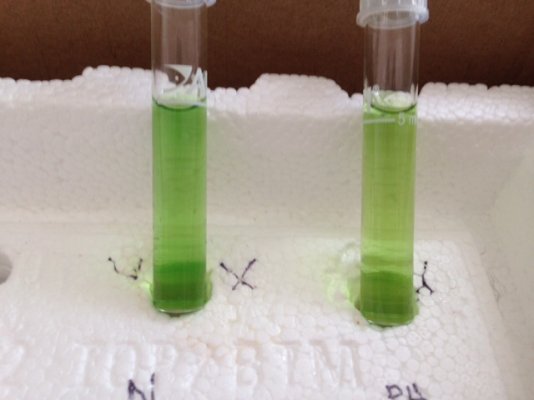Noviceafter2yea
Aquarium Advice FINatic
- Joined
- Jun 2, 2014
- Messages
- 504
I have a 20 gallon tank and have been trying to stabilize the ammonia level.
My city does add something to the water that results in toxic ammonia. I pretreat my change water with prime and have it sit overnight (to make sure it is the same temperature because I cannot tell when straight from the tap).
Currently it has a top fin brand 20 filter. I can't say anymore about it because it came with the tank and is made exclusively for petsmart.
Following the advice of many people on this forum, I ordered a second filter. It is an Aqueon50. Many people suggested I run both at the same time.
Is there anything I need to do to add the additional filter in terms of bacteria?
I also ordered and received a "bad" ammonia detector that supposedly differentiates between the harmful and nontoxic ammonia since using prime doesn't alter readings even if it detoxifies the ammonia.
Yesterday, the ammonia reading from the liquid test was 1.0ppm (with prime). 4 hours after "installing" the new detector, the bad ammonia detector has me in the "alert" category which means it is in the .05ppm. The next level up is the "alarm" category which means it is in the .2ppm range.
While I still need to bring it down to the safe zone (water change and more prime?), this is good, right?
My city does add something to the water that results in toxic ammonia. I pretreat my change water with prime and have it sit overnight (to make sure it is the same temperature because I cannot tell when straight from the tap).
Currently it has a top fin brand 20 filter. I can't say anymore about it because it came with the tank and is made exclusively for petsmart.
Following the advice of many people on this forum, I ordered a second filter. It is an Aqueon50. Many people suggested I run both at the same time.
Is there anything I need to do to add the additional filter in terms of bacteria?
I also ordered and received a "bad" ammonia detector that supposedly differentiates between the harmful and nontoxic ammonia since using prime doesn't alter readings even if it detoxifies the ammonia.
Yesterday, the ammonia reading from the liquid test was 1.0ppm (with prime). 4 hours after "installing" the new detector, the bad ammonia detector has me in the "alert" category which means it is in the .05ppm. The next level up is the "alarm" category which means it is in the .2ppm range.
While I still need to bring it down to the safe zone (water change and more prime?), this is good, right?

